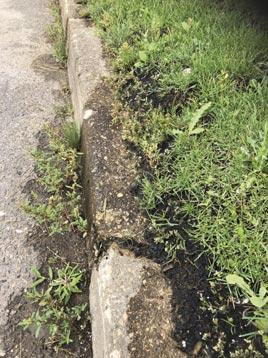
4 minute read
The Differences and Risks between Open and Closed Irrigation Systems and Regularly Reviewed Systems
Rick Malda, CLIA, CIT, WSIP President, Arizona Outdoor Solutions
The Differences and Risks between Open and Closed Irrigation Systems and Regularly Reviewed Systems The Differences and Risks between Open and Closed Irrigation Systems and Regularly Reviewed Systems
Advertisement
Note: City of Hamilton raises water rates 4.11% in 2020
In the irrigation business, until about 10 years ago it was standard to offer out contract services to simply open and close sprinkler systems. While it has begun to turn around in the last number of years it is still a fairly common practice.
Open/Close Contract:
Spring Opening - The water main is secured, sprinklers are tested, and control panels set and ready to go for the watering months.
Fall Closing - This portion involves the removal of water with compressed air in the main line, zone lateral lines, valves and sprinklers to ensure a safe dormant period during the harsh northern winter months.
Simply put, with the opening and closing - the system gets turned on, and then turned offon contract.
This type of contract leaves much to be desired in terms of the effectiveness of nearly any irrigation system. The trouble with it being the time of year that these systems are opened. Typically, mid April to late May, no matter what company you are, this time is a frenzy. Every available technician and truck are utilized and organized to visit every site, ensuring they are all
opened and ready to go as soon as the annuals are planted.
Sprinklers are repaired, leaks are fixed, non-functioning control panels and rain sensors are replaced in a timely manner, before a hurried visit to the next property where the mission is repeated. This is good service. This is the expectation.
However, if this is the only visit the property will see before it is closed again 6-7 months later, it falls short of most property’s needs.
Because the months from April to September will see an incredible change For example, a single leak as small as half an inch can cause, at the very least, 6.5 gallons per minute(gpm) or 1.48 cubic meters per hour of water to escape. This leak may very well, and often does, go unnoticed all season long. That is 75,000 Litres of water just from one single relatively small leak!
With the City of Hamilton’s current water rates increased by 4.11%, that small leak comes at a cost of $269/yr., not to mention the possible loss of plant material and infrastructure damage that it may cause. Multiply that small leak by 10 or 20 and we begin to see the severity spring plant material begins to show itself – sprinkler adjustments are made, and the control panel is set to run at 80% watering capacity.
July visit – once the summer has come into full swing and the temperatures begin to rise, the control panel can be set to the seasonal demands, 100-120% depending on the weather.
August visit – This visit the focus is on cause and effect – this is the best visit to evaluate the irrigation system and the resulting health of plant material. Adjustments may be required on sprinklers, as well as the control panel watering per

in landscape growth and watering needs as the season ebbs and flows, the ‘set it and forget it’ approach can be very costly. In April and May, plant material may be barely visible, if at all. Moreover, the annual plantings likely have not yet taken place. This means the demand for the year’s plant selection is not yet fully understood, as well as the high potential for pipes to be punctured while planting. At the centre of all of this is the total amount of treated water wasted down the drain on a property that has chosen the most frugal irrigation maintenance program.
A single damaged sprinkler or irrigation water line may not seem like a big deal, but it has some pretty staggering numbers tied to it.


of this issue.
That may be one leak of many leaks in a system not being maintained year over year. Imagine a property with multiple leaks and many of them larger leaks than the example. The numbers can be astounding.
Multi visit contract:
Spring opening – system is maintained after a long and harsh winter –minor repairs are performed; major issues are brought to the attention of the Condominium Board or PM.
System is set to run but timers are left in off position as watering at this stage would be unnecessary and a waste.
Late May/early June – system is reviewed after all annuals are planted and

centages, either up or down, depending on the seasonal demands.
September visit – An opportunity to reduce the scheduling significantly and save on watering as the season begins to cool off and cooler evenings and dews return. System is given a final review for the last stretch of the season.
Fall Closing – System is winterized.
When a well-maintained sprinkler system is coupled with water sipping product innovations and technologies, such as smart controllers and flow sensors it really is amazing just how much water and resources can be saved and how many dollars can be put back into the condominium’s control.










